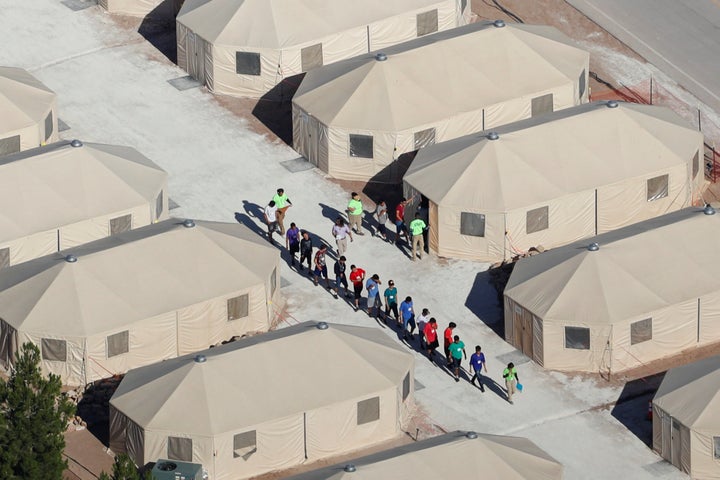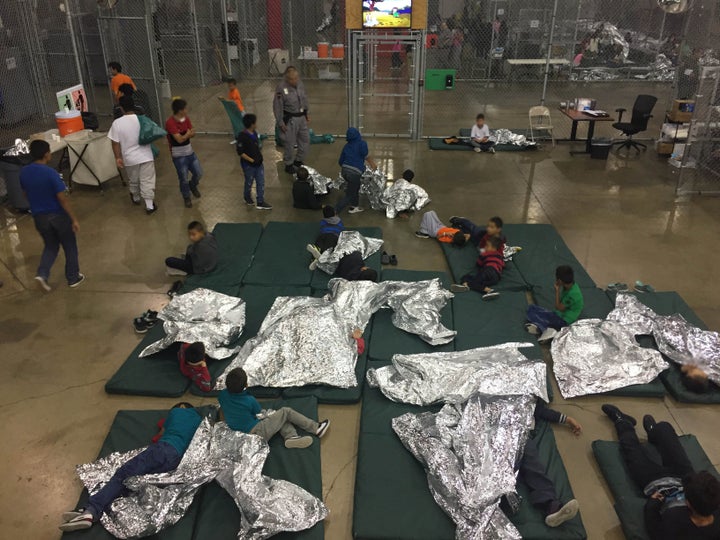
On Wednesday, the Trump administration, under swelling public pressure, tweaked its zero tolerance policy that separated asylum seekers from their children at the Mexican border. While its cruel ploy of tearing children away from their parents lasted a month and a half or so ― that we know of ― the long-term damage done to those children will endure far longer. I’ve spent years trying to heal children who have suffered under similar policies.
Back in 2015, during the surge of unaccompanied children arriving from Central America, I was a clinician in a shelter program funded by the Office of Refugee Resettlement, which is part of the Department of Health and Human Services. I assessed children for exposure to trauma and provided trauma-focused therapy.
Under the Trafficking Victims Protection Reauthorization Act, the Customs and Border Protection agency must turn unaccompanied children over to ORR within 72 hours of apprehension. ORR oversees a shadowy and breathtakingly cost-inefficient network of shelters around the country, including “tender age” shelters for the youngest children. The shelters themselves are operated by human services agencies and nonprofit organizations.

Many of the children who arrived at the shelter where I worked were frightened, traumatized, hungry, ill or all of the above. They had experienced layer upon layer of trauma: entrenched community violence, ruptured attachment with primary caregivers who had left for the U.S. years earlier, crippling poverty, gang threats. They decided to make the terrifying journey to the U.S. because they thought it was their best hope for survival. Many told me they picked the U.S. not for economic reasons or the presence of family members, but because they saw it as a country of law and order, with an appreciation for human life. They knew that returning to their home countries was tantamount to a death sentence.
Exposure to trauma ― or events so horrifying that they overwhelm a person’s ability to cope ― is strongly correlated with a host of symptoms like flashbacks, hypervigilance, avoidance behavior and physical complaints. Exposure to trauma in childhood can both stunt cognitive development and alter the structure of a young brain in profound ways. Thanks to the groundbreaking Adverse Childhood Experiences Study, conducted by Kaiser Permanente and the Centers for Disease Control and Prevention, we know that exposure to traumatic events in childhood is strongly correlated with increased risk of suicide attempts, drug addiction, depression, chronic obstructive pulmonary disease, heart disease and liver disease.
Perhaps most heartbreaking for these children ― like the infant reportedly ripped from her mother’s breast ― is the trauma of being separated from their primary caregiver. Young children define their worldview through interactions within their immediate environment. Children who have a consistent, positive relationship with their primary caregiver tend to become healthy, happy, engaged and productive members of society. Children whose attachment has been ruptured often become mistrusting, fearful, angry and emotionally volatile adults.
“Children whose attachment has been ruptured often become mistrusting, fearful, angry and emotionally volatile adults.”
So what will become of the 2,300 children separated from their families in recent weeks, some still waiting terrified in tender-age shelters at this very moment? The government has said it will make no effort to reunite them with their parents. There are two foreseeable outcomes. Unsurprisingly, since this barbaric policy was adopted with little forethought, both outcomes carry profoundly damaging consequences.
If they are deported, many of these frightened children will grow into adolescents who are unable to self-regulate emotionally, may have cognitive limitations and are fueled by rage. Essentially, they will be stuck in the “flight” mode of the neurobiological “fight or flight” process. That can make them especially vulnerable prey for gangs like MS-13, whose ability to recruit was supposedly being targeted by this family separation policy. The United States will have effectively deported a mental health crisis that will only exacerbate the problems these kids were fleeing in the first place.
And if they are granted asylum and stay? Even in the affluent, progressive and well-served county where I now work in a public high school, finding affordable Spanish-speaking mental health options is a struggle. Clinics are understaffed, waitlists are eternal and fees are too high. Trauma treatment is a long game, and it just isn’t feasible for most recent immigrant families.
One way or the other, the effects of this weekslong injustice will reverberate for years, if not decades. If these children are sent home, their prospects are much worse for the harrowing experience stateside. And if they are permitted to stay, the already fraught process of adjusting and assimilating to a new country will be much harder in the aftermath of senseless cruelty.
Stephanie Carnes is a bilingual licensed clinical social worker at a public high school in New York. She was a clinician in a now-defunct ORR-funded unaccompanied minors program.
